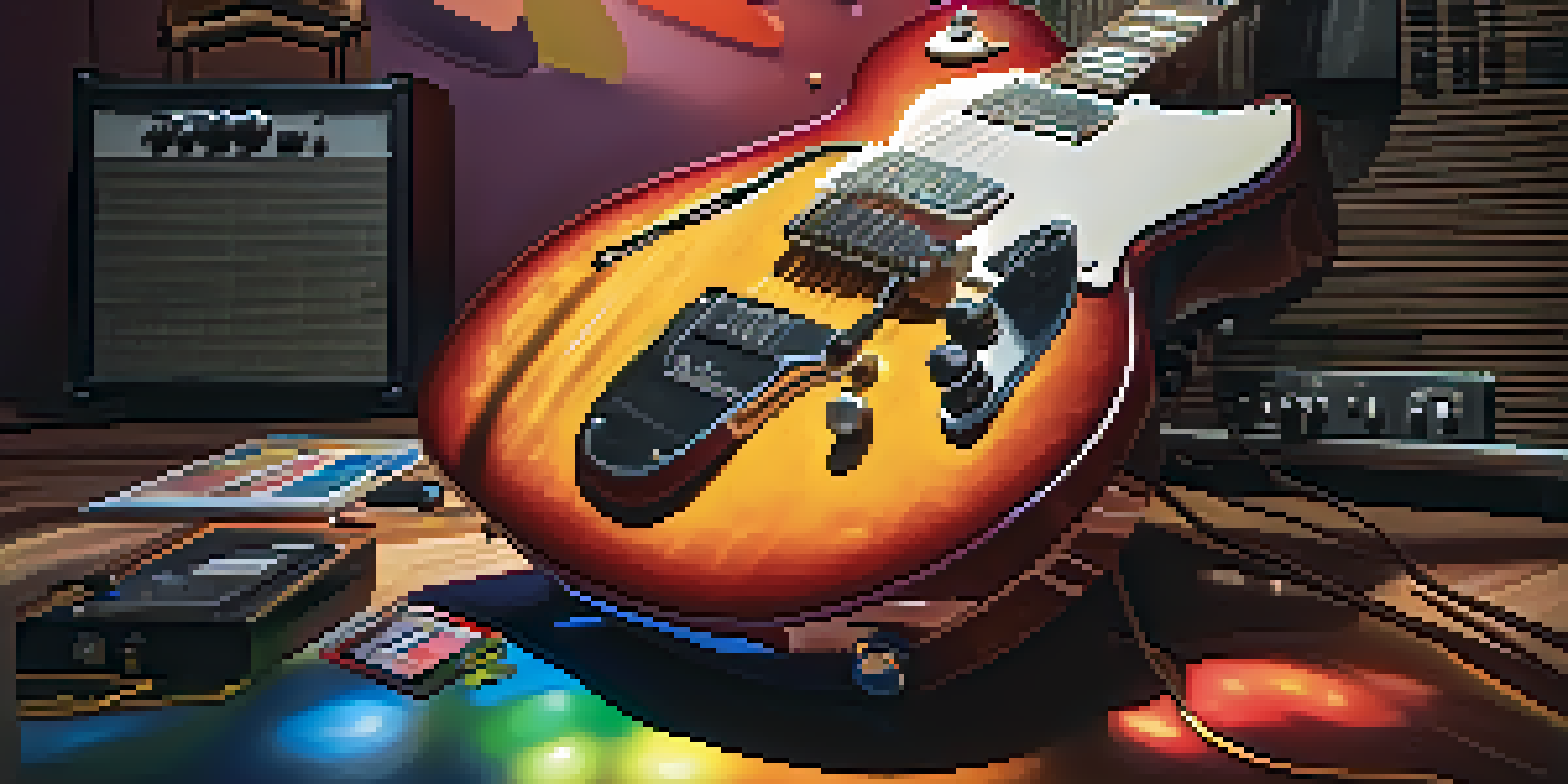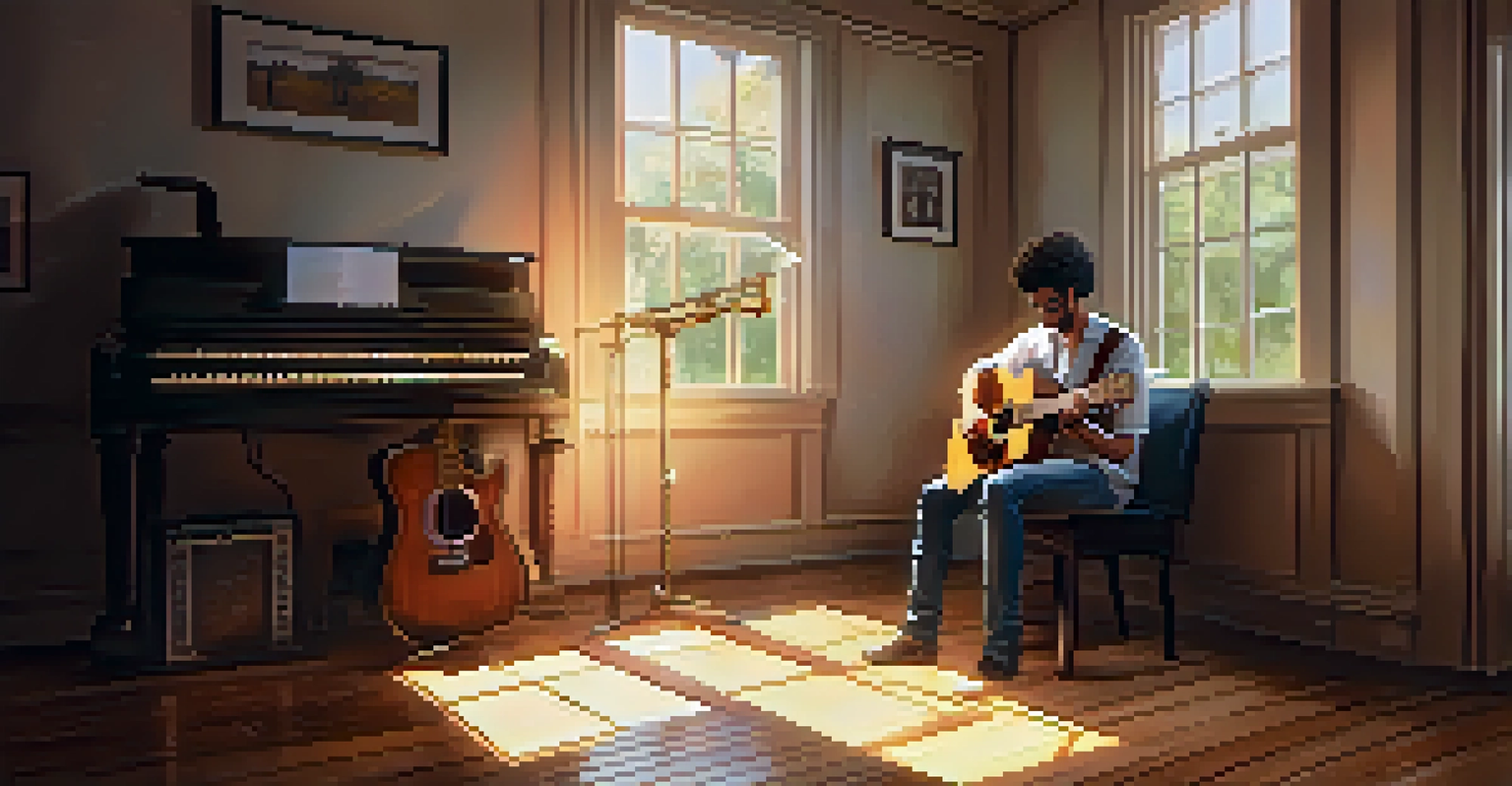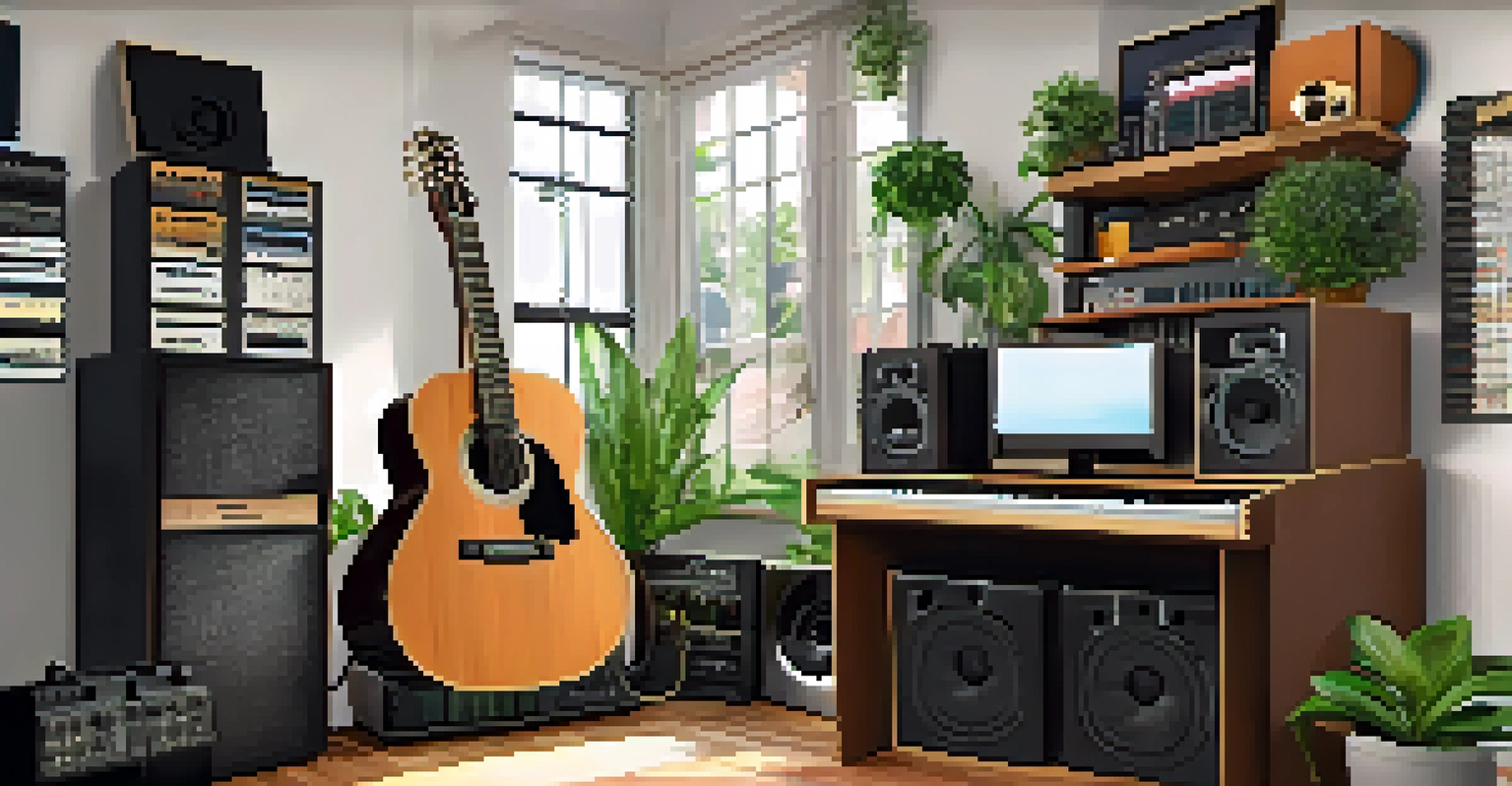Essential Techniques for Capturing High-Quality Guitar Sound

Understanding the Importance of Guitar Tone
Guitar tone is the foundation of any great recording. It’s not just about how the guitar sounds; it’s about how that sound translates into magic during recording. The right tone can evoke emotions and tell a story, making it vital to understand what you're aiming for before you start.
Music is the shorthand of emotion.
Think of guitar tone like the seasoning in a dish. Just as a pinch of salt can elevate a meal, the right settings on your amp and effects can transform your sound. Experimenting with different settings helps you find that perfect flavor for your tracks.
Ultimately, the goal is to create a tone that complements your music style, whether it be rock, jazz, or classical. Take the time to explore what works best for you and your instrument, and you’ll be on your way to capturing high-quality sound.
Choosing the Right Guitar for Your Sound
Choosing a guitar is more than just picking your favorite color; it significantly affects your sound. Different guitars have unique tonal qualities that can enhance or detract from your music. For instance, a hollow body might give you a warm, rich tone, while a solid-body electric delivers more punch.

It's also essential to consider the genre you're playing. If you're recording a classic rock track, a Gibson Les Paul might be your best bet, while an acoustic guitar shines in folk or country settings. Each type of guitar brings its own character to your recordings, so select wisely.
Guitar Tone Shapes Your Sound
Understanding and adjusting your guitar tone is essential for creating the emotional impact and character of your music.
Don’t forget the importance of guitar setup. A well-maintained instrument not only sounds better but also plays more comfortably. Regularly checking your strings, tuning, and action can make a significant difference in your recordings.
Microphone Placement for Optimal Sound Capture
Microphone placement is crucial when it comes to capturing your guitar's sound. The distance and angle of the mic can alter the tonal quality you’re aiming for. For instance, placing the mic close to the guitar will capture more of the body’s resonance, while placing it further away can yield a more ambient sound.
The guitar is a miniature orchestra in itself.
Experimentation is key here. Try different positions—aiming at the 12th fret, for example, can yield a balanced tone, while miking near the soundhole will capture more bass. Each position provides distinct characteristics, allowing you to find the best fit for your music.
Remember that your room’s acoustics also play a role. A room with hard surfaces may create unwanted reflections, while a treated room can enhance your sound. Always consider how your surroundings affect the recordings.
Using Effects Pedals to Enhance Your Sound
Effects pedals can take your guitar sound to the next level, adding depth and character. Whether you're using distortion for that heavy rock sound or reverb for a lush ambiance, the right pedals can enhance your recordings significantly. Think of them as spices that can transform your basic sound into something extraordinary.
However, moderation is key. Overusing effects can muddy your sound, making it hard to distinguish the guitar’s natural tone. It’s best to start with one or two effects and build from there, ensuring that each addition serves a purpose.
Choose the Right Guitar Wisely
Selecting a guitar that complements your music genre enhances your recordings by bringing out the unique tonal qualities of the instrument.
Don’t be afraid to experiment with different combinations. Sometimes the unexpected can lead to the most exciting results. Spend time tweaking your settings until you find the perfect blend that complements your music.
Essential Recording Techniques for Guitar
When it comes to recording guitar, utilizing the right techniques is essential for achieving high-quality sound. Always ensure that your guitar is tuned correctly; even slight variations can impact the final product. Additionally, consider using a direct input (DI) alongside a mic’d amp to capture the best of both worlds.
Another useful technique is layering. Recording multiple takes can add depth and richness to your sound. You can pan different tracks to either side, creating a fuller stereo image that makes your guitar stand out.
Finally, don’t overlook the importance of monitoring your sound while recording. Use headphones to catch any unwanted noise or imperfections during the process, allowing you to make adjustments on the fly.
The Role of the Recording Environment
Your recording environment has a profound impact on the quality of your guitar sound. A room with too much echo can create chaos, while a well-treated space can enhance clarity. Consider investing in acoustic panels or curtains to minimize unwanted reflections and background noise.
It’s also important to keep your recording space organized. A clutter-free area allows you to focus on your music rather than distractions. Plus, having everything set up properly makes the recording process smoother and more enjoyable.
Recording Environment Matters
The acoustics and organization of your recording space significantly affect the quality of your guitar sound, impacting your overall recordings.
Lastly, don’t forget about the power of ambiance. Adding a little personal touch to your environment, like good lighting or comfortable seating, can help put you in the right mindset for creativity.
Editing and Mixing Your Guitar Tracks
Editing and mixing are where your guitar tracks truly come alive. Start by trimming any unwanted noise or silence from your recordings. This helps create a polished sound that flows seamlessly within your track. Consider using software that allows for easy adjustments to volume, panning, and effects.
Mixing is an art in itself. Balancing your guitar with other instruments is crucial to ensure it stands out without overpowering the mix. Use EQ to carve out space for your guitar, ensuring it has a prominent place in the overall sound.

Finally, don't rush the process. Take your time to experiment with different effects, levels, and arrangements. The more effort you put into the editing and mixing phase, the better your final product will sound.
Final Thoughts on Capturing Great Guitar Sound
Capturing high-quality guitar sound is both an art and a science. It involves understanding your instrument, exploring different techniques, and fine-tuning your recordings. As you experiment and gain experience, you’ll discover what works best for your unique style.
Always remember that there’s no one-size-fits-all solution. What sounds great for one genre may not work for another, so stay flexible and open-minded in your approach. Your journey in sound capture is as important as the final product.
Guitar Tone Sets the Mood
The right guitar tone is essential for evoking emotions and enhancing the storytelling aspect of your music.
Embrace the learning process and enjoy every moment of creating. With practice and patience, you’ll be able to master the essential techniques for capturing guitar sound that truly resonates.